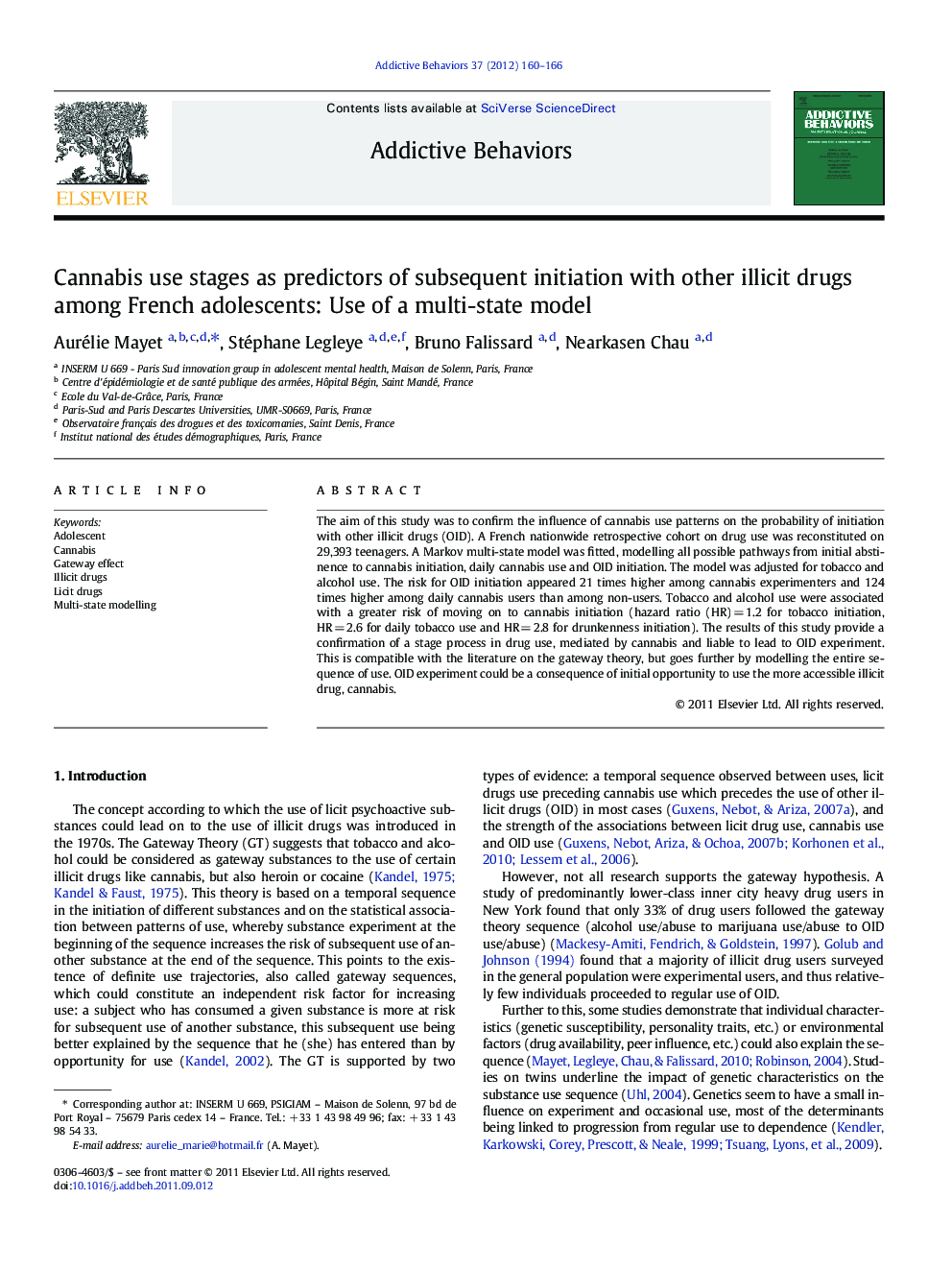| Article ID | Journal | Published Year | Pages | File Type |
|---|---|---|---|---|
| 899441 | Addictive Behaviors | 2012 | 7 Pages |
The aim of this study was to confirm the influence of cannabis use patterns on the probability of initiation with other illicit drugs (OID). A French nationwide retrospective cohort on drug use was reconstituted on 29,393 teenagers. A Markov multi-state model was fitted, modelling all possible pathways from initial abstinence to cannabis initiation, daily cannabis use and OID initiation. The model was adjusted for tobacco and alcohol use. The risk for OID initiation appeared 21 times higher among cannabis experimenters and 124 times higher among daily cannabis users than among non-users. Tobacco and alcohol use were associated with a greater risk of moving on to cannabis initiation (hazard ratio (HR) = 1.2 for tobacco initiation, HR = 2.6 for daily tobacco use and HR = 2.8 for drunkenness initiation). The results of this study provide a confirmation of a stage process in drug use, mediated by cannabis and liable to lead to OID experiment. This is compatible with the literature on the gateway theory, but goes further by modelling the entire sequence of use. OID experiment could be a consequence of initial opportunity to use the more accessible illicit drug, cannabis.
► Confirmation of a sequence leading from licit drug use to illicit drug use. ► Risk of subsequent other illicit drug use increasing with cannabis use level. ► Results supported by an original technique: multi-state modelling. ► Necessity of prevention measures at early stages of use among adolescents.
